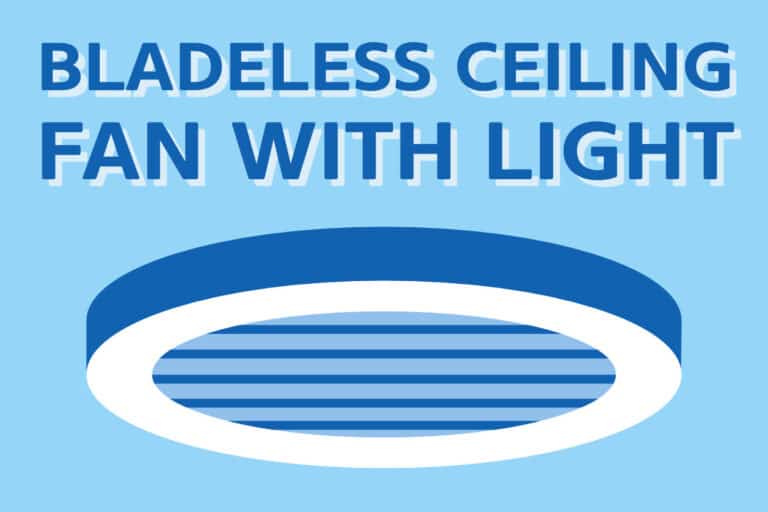If you’re replacing a ceiling fan or fixing one that’s broken, you will need to know how to remove the old fixture and install the new one. The procedure for this isn’t difficult and doesn’t require any special tools.
But remember: electricity is dangerous and if you don’t feel comfortable doing these steps on your own, hire an electrician.
First, shut off the power supply at the circuit breaker; then we’ll get started.
How To Take Down A Ceiling Fan: Step-by-Step Instructions
Step 1: Prepare Your Work Area
Before removing your ceiling fan, make sure all of your tools are within arm’s reach, and have a clear work area.
Here’s what you will need to uninstall a ceiling fan:
- Phillips screwdriver
- Ladder (if your ceiling fixture is high up)
Step 2: Turn Off the Power Supply at the Circuit Breaker
Remember you can be electrocuted if any power still runs through your old fan after removing it, so always make sure that the electricity is completely shut off.
At the circuit breaker panel, switch off the corresponding breaker that feeds power to your ceiling fixture.
If you’re not sure which one it is, turn them all off and then switch one back on; if your fixture does not light up when switched on (and thus has no power running through it), there’s no risk of electric shock.
Step 3: Remove Your Ceiling Fan Box Covering
Before detaching or touching anything inside of your ceiling box (such as wiring), make sure to remove the cover first. This is generally much easier if your ceiling fan is bladeless.
Step 4: Disconnect Your Ceiling Fan Box Covering
There are two ways your lighting fixture might be attached: directly to the ceiling or via a metal canopy.
If it’s attached via a metal canopy, detach this by unscrewing the screws surrounding it (check if there’s any light inside; if there is, don’t touch anything until you’ve switched off all power!). If it’s not attached to anything at all, simply lift it up on its edge and disconnect it.
Note that some fixtures come with an additional plastic insulation sheet between the lighting box and fan motor (this will need to be detached if present). This sheet must also be removed in order for the wires to be completely disconnected.
Step 5: Disconnect the Ceiling Fan Wires
After disconnecting your ceiling fan box, you will need to detach its wiring.
Most fixtures have three wires attached (black, white, and green/bare), which you disconnect by twisting them together (lefty-loosey) and then undoing the wire nuts that connect them; you might want to cut these wires close to the connection point first with some side cutters for better access.
For fixtures without wire nuts, you’ll need a screwdriver to loosen the screws on the fixture’s socket before removing it from each of its wires.
Remember: The black wire is “hot” and needs to be covered with a wire nut or labeled as such with electrical tape.
Step 6: Ceiling Fan Removal
After disconnecting your ceiling fan’s wiring, lift up on one side of the fixture until it detaches from your ceiling.
In some cases, you may need to place a stepladder underneath the fixture in order to successfully detach it without having to stand on top of it or straining yourself too much.
If any screws or wires are still attached after lifting upwards, remove them completely before moving on to the next step.
Step 7: Install a New Ceiling Fan
Now that you have an empty space where your old fixture used to be, set the new fixture inside and ensure that enough space is around it so that its blades can spin freely (most fixtures require at least 9 inches of clearance on all sides).
If your new fixture still has screws attached, screw it securely into place and connect its wiring to each wire in the ceiling box following the same process as with your old fixture (black to black, white to white, and green/bare to green/bare). You might need some help or a second pair of hands for this.
Then attach any plastic insulation sheets between the fixture and motor if necessary, insert whatever lightbulbs you desire, and turn on the power at the circuit breaker again. If everything works properly, then congratulations: you’ve just replaced your own ceiling fan!
Step 8: Replace the Ceiling Fan Box Covering
After ensuring that your ceiling fan is functional and working properly, replace its canopy and attach it securely with screws all around (make sure to place something underneath in case any of the screws drop).
Put in the removed light bulbs and reconnect the fixture by screwing in each wire nut (tighten them with a ratchet screwdriver or pliers). Then put the ceiling fan’s box covering back over top by snapping it into place.
At this point, turn on the power to your ceiling fan before finishing up. If everything works properly, you’re good to go!
Hope this helped some of you out there on how to take a ceiling fan down so you can safely enjoy your new one!


Download this FREE cheat sheet to find 28 tricks that can help you save on your electricity and heating bill each month.
Click here to get a FREE Cheat-Sheet![How To Remove A Ceiling Fan [Quick & Easy Guide] Fan Icon](https://homecaprice.com/wp-content/uploads/2020/03/fan-60.png)


